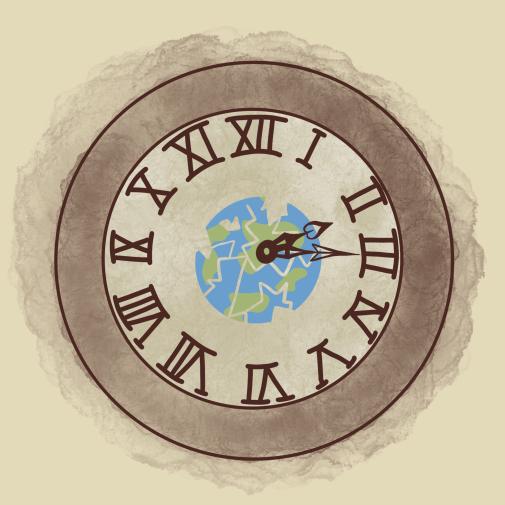The Kahramanmaras Earthquake
by Annie Zhu
On February 6th, 2023, two devastating earthquakes struck Turkey at its Syrian border. Following the first magnitude 7.8 earthquake, another magnitude 7.5 earthquake hit nine hours later. Thousands of people were killed and billions of dollars were lost from physical damage. The state authorities urgently declared a level 4 emergency and called for international assistance while the death toll climbed rapidly. To date, more than 9.1 million people have been affected, and more than 45,000 people were killed in this incident. By March 1, 2023, more than 11,000 aftershocks in the region have also added to the devastation. This earthquake is one of the largest in Turkey’s history, along with the 1668 North Anatolia earthquake and the 1939 Erzincan earthquake. One thing is certain – the destructive consequences of the event will remain for years to come.
The impact of the Kahramanmaras earthquake has had severe negative effects on physical and mental health of the residents in Turkey and Syria. Since the quake on February 6th, 1.9 million people have relocated and now live in temporary shelters after the disaster destroyed their houses. These poor living conditions make the survivors susceptible to health issues. Physical effects aside, the experience has led people to develop trauma and increased risk for chronic anxiety and depression. For instance, the survivors may develop Survivor’s Guilt as they believe that they have done something wrong when others have passed away in the tragic event. Furthermore, the Kahramanmaras Earthquake directly damaged $34.2 billion worth of buildings and facilities in Türkiye and Syria. This also exposed the design problems in buildings that were vulnerable to strong earthquakes, leading to more destruction due to anthropogenic factors. Ultimately, the Kahramanmaras Earthquake contributed to a large humanitarian crisis and caused economic problems that are affecting the lives of millions of people.
In response to the Kahramanmaras Earthquake, countries around the world have offered humanitarian support to relieve the level of destruction. For example, the United Nations have offered multiple cross-border aid operations to deliver supplies. The Bab Al-Hawa, Bab Al-Salam, and Al-Ra’ee have all been open for UN aid delivery, and by March 4th, 583 trucks with aid have crossed into Northwest Syria to provide assistance. However, according to an IFRC market assessment, hot meals, hygiene items, winter clothes, and many more critical necessities are still desperately needed in the affected areas.
Overall, being one of the worst earthquakes in recent years, the Kahramanmaras Earthquake has transformed the lives of many and is continuously affecting more. Similar to many other large-scale earthquakes in history, it destroyed local communities, the economy, and killed thousands of people. In addition to learning the details about how this earthquake has affected Türkiye and Syria and how the United States plays a role in this event, this issue also introduces past earthquakes that have heavily injured communities around the world. By learning about the history of earthquakes and juxtaposing different earthquakes for comparison, we will discuss the multifaceted impact of natural disasters in a comprehensive manner. From the effect on people’s mental health to global climate change, understanding the context beyond the Kahramanmaras Earthquake is essential for teenagers to provide better assistance.
Letter from the Editors in Chief
Hello, we’re the Editors in Chief of Our Gen! Thank you for reading the March 2023 issue of Our Gen. Our goal for our club is to connect the teenagers in our current digital age to major current issues to help us further understand and care about the world around us. As writers, artists, and editors, our team has delved into current issues, connecting them back to our lives. Understanding earthquakes in Turkey is extremely important, and so is understanding how the natural fundamental environmental issue is affecting the entire world, including our homes. For example, California fault lines provide a dangerous possibility for earthquakes up to a magnitude of eight. In cases such as this, we believe that it is important to educate teenagers about these natural disasters so we can better protect ourselves and perhaps, one day, to be able to protect the human race from those deadly disasters.
We want to thank our amazing team for their hard work on this issue, our advisor Mrs. Chung for her constant support, and a special thank you to Ms.Tekin for inspiring us to take action and to influence others regarding the Turkey earthquakes. Our Generation reminds us how closely connected people are, and how even a small positive remark can leave a huge trace in someone’s lives.
With this, we hope our readers will take away the importance of understanding our world. Our Generation creates a platform for teenagers to utilize their voices and actions. Even more so, we would like to encourage and empower young adults to become agents of change and to make those positive impacts for our society. We, young adults, can shape the future. We are the future.
Sincerely,
Chanah Y. & Melody Y.
Sources:
2023 Turkey-Syria Earthquake - Center for Disaster Philanthropy
Türkiye: 2023 Earthquakes Situation Report No. 6, As of 3 March 2023
Survivors of Deadly Earthquakes Must Deal with Lasting Trauma - Scientific American
Written by Annie Zhu

 History of Earthquakes Around the World
History of Earthquakes Around the World